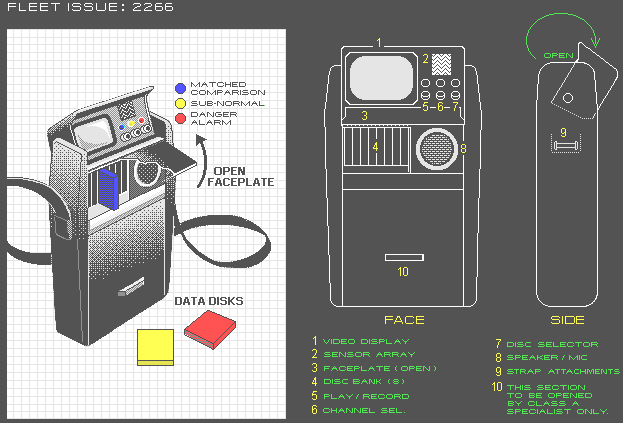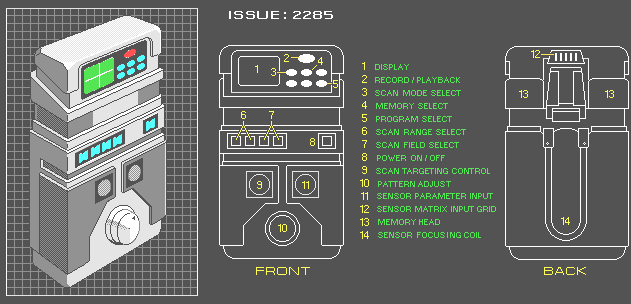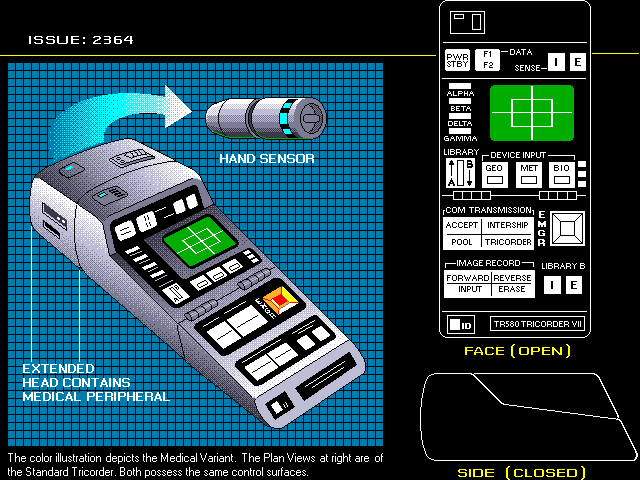A multepurpose scientific and technical instrument. Developed for Starfleet, the Tricorder incorporates sensors, computers, and recorders in a convenient, portable form. Several models of Tricorders have been used by starship crews over the years. All of them had featured state-of-the-art sensing technology, and have been an essential part of starship missions and operations.
Specialized
Tricorders are available for specific engineering, scientific, and medical
applications.
In
2366, standard-issue Starfleet Tricorders were unable to detect subspace
phenomena. They were
also
incapable of sensing neutrino emissions. The presence of thoron particles
can interfere
with
a Tricorders scan, a disadvantage which has been used by the Maquis in
order to evade that scan.
Details
The standard tricorder measures 8.5 x 12 x 3 cm and weighs 353g. The case in made from micromilled duranium foam and is hinged, just below the center, for portability. The display screen measures 2.4 x 3.6 cm. Power is provided by an induction rechargeable sarium krellide power, which will last for approximately 18 hours. A typical rate of power usage is 15.48 watts.
The sensor assembly consists of 235 individual electrical, mechanical and subspace sensor systems. 115 of these are located on the top of the tricorder. These are the field-of-view sensors with a lower limit of 1/4 degree. The other 120 sensors are omniditertional. The tricorder has a maximum data transfer rate of 7.9 kiloquads/second through it's subspace transceiver assembly. The tricorder's memory can contain up to 6.91 kiloquads. Additional "library" chips are formatted to 4.5 kiloquads.


